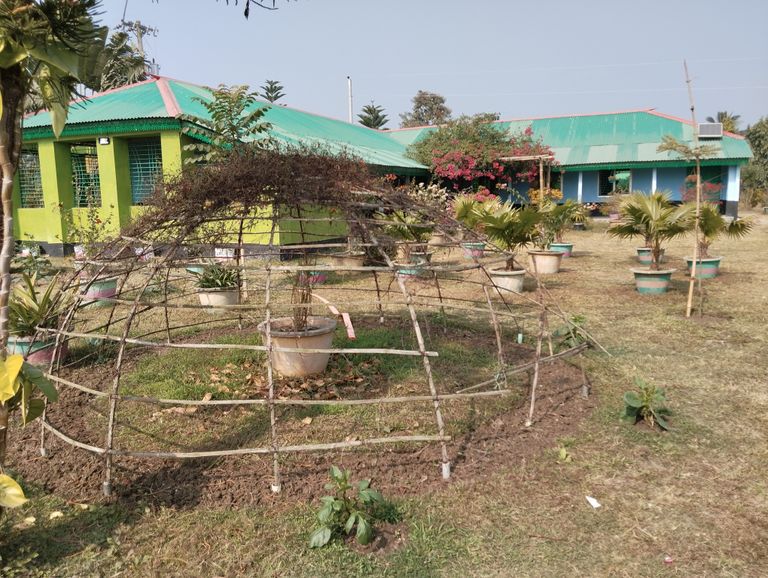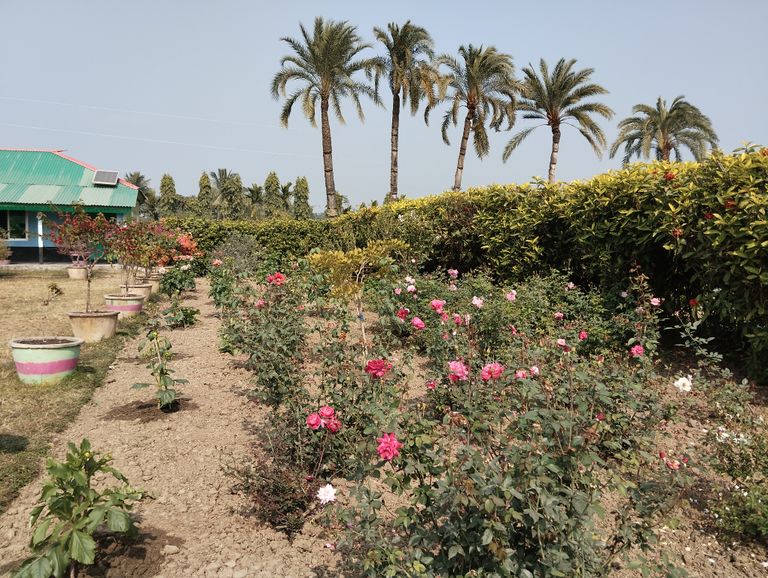
Parks The Heart of Urban Serenity.
In the bustling landscape of cities, where skyscrapers kiss the sky and traffic hums incessantly, parks emerge as serene sanctuaries. These green oases not only beautify urban environments but also provide a vital refuge for physical activity, relaxation, and socialization. Parks hold a special place in human life, offering a harmonious blend of nature and recreation that transcends cultures and generations.
The Historical Evolution of Parks
Parks have a rich history, dating back to ancient civilizations. The concept of public green spaces was first popularized in Mesopotamia, where gardens were meticulously designed to emulate paradise on Earth. Similarly, in ancient Egypt, gardens symbolized order and harmony, often serving as places of worship.
Fast forward to 18th-century Europe, parks began to take on a more public role. The advent of the Industrial Revolution saw a rapid urban expansion, creating a need for recreational spaces to counterbalance the effects of industrialization. Iconic parks such as London’s Hyde Park and New York’s Central Park were established during this period, offering city dwellers a breath of fresh air amidst growing urban chaos.
The Ecological Importance of Parks
Parks are more than just patches of greenery; they are crucial for maintaining ecological balance in urban areas. Here’s how they contribute:
- Air Quality Improvement: Trees and plants in parks act as natural air purifiers, absorbing carbon dioxide and releasing oxygen. They also trap dust and pollutants, making the air cleaner and healthier.
- Biodiversity Hotspots: Parks serve as habitats for various species of flora and fauna. They provide a safe space for birds, insects, and small mammals, contributing to biodiversity in cities.
- Climate Regulation: Urban heat islands, a phenomenon where cities become significantly warmer due to human activities, can be mitigated by parks. The vegetation in parks helps lower temperatures, providing a cooling effect.
- Water Management: Parks often include water bodies that aid in rainwater harvesting, reduce surface runoff, and prevent flooding.
Health Benefits of Parks
The link between parks and human health is undeniable. Spending time in green spaces has been scientifically proven to enhance both mental and physical well-being. Here’s how parks contribute:
- Physical Activity: Parks provide ample space for jogging, cycling, yoga, and other forms of exercise. Regular physical activity reduces the risk of chronic diseases like obesity, diabetes, and heart conditions.
- Mental Well-being: Nature has a calming effect on the mind. Walking in a park or simply sitting amidst greenery can reduce stress, anxiety, and depression.
- Social Interaction: Parks are communal spaces where people gather, fostering a sense of community. Whether it’s children playing, families picnicking, or seniors chatting, parks promote social bonding.
- Child Development: For children, parks are more than just playgrounds; they are places of learning and exploration. Climbing trees, chasing butterflies, or playing games enhances their cognitive and physical development.
Parks as Cultural and Recreational Hubs
Parks are not just about nature; they are also vibrant cultural and recreational hubs. Many parks host events such as music concerts, art exhibitions, and food festivals, enriching the cultural fabric of a community. Sculptures, fountains, and memorials within parks often narrate the historical and cultural stories of a region.
Recreational facilities like boating, skating rinks, and fitness trails make parks a hub for entertainment. Some parks even include theme-based attractions, like botanical gardens, butterfly parks, and wildlife sanctuaries, adding an educational dimension to recreation.
Urban Parks: A Necessity, Not a Luxury
In modern cities, parks are not mere luxuries but necessities. They play a critical role in enhancing the quality of urban life. Consider these key aspects:
- Community Building: Parks act as melting pots where people from diverse backgrounds interact. They encourage inclusivity and unity, breaking down social barriers.
- Economic Value: Proximity to parks often increases property values. Moreover, well-maintained parks attract tourists, boosting local economies.
- Urban Planning: Parks are integral to sustainable urban planning. They mitigate the adverse effects of urbanization, offering a balanced coexistence of development and nature.
- Disaster Management: Parks serve as safe zones during natural disasters, offering open spaces for temporary shelters and evacuation.
Challenges Facing Parks
Despite their numerous benefits, parks face several challenges:
- Encroachment: Rapid urbanization often leads to encroachment on parklands for commercial or residential development.
- Maintenance: Many parks suffer from neglect due to inadequate funding and poor management.
- Pollution: Littering, vandalism, and water pollution degrade the quality of parks, making them less inviting.
- Accessibility: In many cities, parks are unevenly distributed, making them inaccessible to marginalized communities.
The Future of Parks
The future of parks lies in innovation and sustainability. Smart parks, equipped with technologies like solar-powered lighting, Wi-Fi connectivity, and interactive installations, are gaining popularity. Vertical parks, rooftop gardens, and urban forests are emerging as solutions to space constraints in densely populated cities.
Moreover, community involvement is key to the success of parks. Initiatives like park clean-up drives, tree-planting campaigns, and volunteer programs encourage people to take ownership of their local parks, fostering a culture of care and responsibility.
Conclusion
Parks are not just green spaces; they are lifelines that breathe vitality into urban jungles. They are symbols of hope, offering a glimpse of nature’s splendor amidst concrete landscapes. By investing in parks and addressing the challenges they face, we can create healthier, happier, and more sustainable communities. The next time you visit a park, take a moment to appreciate its beauty and significance—it’s more than just a place; it’s a gift to humanity.

The Art of Arranging Flowering Plants in a Park
Flowers are nature’s masterpiece, blending vibrant colors, enchanting fragrances, and mesmerizing forms. When arranged thoughtfully in parks, flowering plants not only enhance the beauty of the space but also create a haven for relaxation and rejuvenation. Designing a flower arrangement in a park requires a blend of creativity, planning, and an understanding of plant behavior. Here, we’ll explore the key aspects of arranging flowering plants in a park, turning it into a botanical wonderland.
- Planning the Layout
The foundation of any beautiful park begins with a well-thought-out plan.
Zoning the Park: Divide the park into distinct zones such as a central garden, pathways, children’s play area, and seating zones. Flower arrangements should align with these zones to enhance their utility and aesthetics.
Seasonal Considerations: Choose flowers that bloom at different times of the year to ensure the park remains vibrant year-round.
For example:
Spring Blooms: Tulips, daffodils, and cherry blossoms.
Summer Glow: Marigolds, zinnias, and sunflowers.
Autumn Shades: Chrysanthemums and asters.
Winter Wonders: Pansies and camellias.
- Selecting the Right Flowers
Choosing the right flowers is critical to the overall impact.
Native Plants: Incorporate native flowering plants as they require less maintenance and adapt well to the local environment.
Variety and Contrast: Mix perennials, annuals, shrubs, and climbers to create depth and interest. Consider contrasting colors and textures to create visual appeal.
Examples:
Combine tall sunflowers with bushy marigolds for height variation.
Use ground-cover plants like moss roses to fill gaps between larger flower beds.
- Designing Flower Beds
The arrangement of flower beds can transform the park's aesthetic.
Geometric Beds: Create symmetrical designs using circular, square, or triangular flower beds. These add a formal look to the park.
Naturalistic Style: Let flowers grow freely to mimic a meadow, ideal for a casual and relaxed ambiance.
Layering: Arrange flowers in layers, placing taller plants at the back and shorter ones in the front. This ensures all blooms are visible.
- Adding Highlights
Make certain areas of the park stand out with unique features.
Thematic Gardens: Dedicate sections to specific themes like a rose garden, butterfly garden, or medicinal plants.
Flower Arches and Tunnels: Use climbers like bougainvillea or morning glory to create enchanting arches.
Water Features: Surround fountains or ponds with lilies, irises, and aquatic plants for a serene effect.
- Pathways and Borders
Pathways and borders are crucial in guiding visitors while enhancing the park's charm.
Flower-Lined Paths: Use colorful blooms along pathways to create a welcoming walk. Flowers like lavender or begonias are excellent for this purpose.
Borders with Contrast: Use a mix of flowering and non-flowering plants to define pathways and flower beds distinctly.
- Sustainability and Maintenance
A beautiful park requires consistent care and eco-friendly practices.
Composting: Use organic compost to nourish the plants naturally.
Rainwater Harvesting: Implement water conservation techniques to maintain the plants during dry seasons.
Integrated Pest Management: Opt for natural methods to control pests and diseases.
- Community Involvement
Engage the local community to foster a sense of ownership and pride.
Host events like flower shows or gardening workshops.
Encourage volunteers to participate in planting and maintenance activities.
- Benefits of a Flower-Filled Park
Parks adorned with flowering plants offer numerous advantages:
Aesthetic Appeal: The vibrant colors and patterns delight visitors of all ages.
Environmental Impact: Flowering plants improve air quality, attract pollinators, and support biodiversity.
Mental Well-being: Spending time in such serene environments reduces stress and boosts mood.
Arranging flowering plants in a park is both an art and a science. A well-designed park not only captivates the eyes but also uplifts the soul. By combining thoughtful planning, sustainable practices, and community participation, any park can transform into a blooming paradise, leaving a lasting impression on visitors and fostering a deeper connection with nature.

A Comprehensive Guide to Pruning Flowering Plants
Pruning is a vital gardening practice that helps maintain the health, shape, and beauty of flowering plants. It involves the removal of dead, damaged, or overgrown parts of the plant to encourage healthy growth and vibrant blooms. In this blog, we will explore the importance, techniques, and tips for pruning flower plants effectively.
Why is Pruning Important?
Pruning is not just about aesthetics; it plays a significant role in the overall well-being of your plants. Here are some key reasons:
- Encourages Growth: Regular pruning stimulates the plant to grow new shoots and flowers.
- Prevents Diseases: Removing dead or infected branches reduces the risk of disease spreading to healthy parts.
- Improves Air Circulation: Thinning overcrowded branches allows better air and light penetration, reducing fungal infections.
- Shapes the Plant: Pruning helps maintain the desired size and shape, enhancing the garden's visual appeal.
- Boosts Flowering: Deadheading (removing spent flowers) encourages the plant to produce more blooms.
When to Prune Flowering Plants
Timing is crucial for effective pruning, as it depends on the plant species and its blooming cycle:
- Spring-Blooming Plants: Prune immediately after flowering. Examples include azaleas, forsythia, and lilacs.
- Summer-Blooming Plants: Prune in late winter or early spring before new growth begins. Examples include roses, hibiscus, and hydrangeas.
- Perennials: Deadhead throughout the blooming season and cut back in late fall or early spring.
- Annuals: Regularly remove spent flowers to extend the blooming period.
Types of Pruning Techniques
Understanding the different pruning methods is essential to achieve the desired results. Here are some common techniques:
- Deadheading: Removing faded flowers to encourage continuous blooming.
- Pinching: Pinching off the tips of young stems to promote bushier growth.
- Thinning: Removing entire branches or stems to improve airflow and light penetration.
- Shearing: Trimming the plant to maintain a uniform shape, often used for hedges.
- Rejuvenation Pruning: Cutting the plant back severely to encourage fresh growth, typically done on overgrown plants.
Steps to Prune Flowering Plants
- Prepare Tools: Use sharp, clean pruning shears, loppers, or saws depending on the size of the branches.
- Inspect the Plant: Look for dead, damaged, or diseased branches.
- Make Clean Cuts: Cut at a 45-degree angle just above a healthy bud or leaf node.
- Thin Overcrowded Areas: Remove excess growth to allow better airflow and light.
- Deadhead Regularly: Remove spent flowers throughout the blooming season.
- Dispose of Debris: Clear away pruned materials to prevent the spread of diseases.
Common Mistakes to Avoid
- Pruning at the Wrong Time: This can harm the plant or reduce flowering.
- Over-Pruning: Cutting too much can stress the plant and affect its growth.
- Using Dirty Tools: This can introduce diseases to the plant.
- Improper Cuts: Jagged cuts can lead to infections.
Tips for Successful Pruning
Research Plant Needs: Understand the specific requirements of each plant species.
Start Small: If you're unsure, prune less to avoid overdoing it.
Use Quality Tools: Invest in high-quality, sharp tools for clean cuts.
Wear Protective Gear: Gloves and goggles protect you from thorns and debris.
Observe Growth Patterns: Regularly check plants for signs of overcrowding or disease.
Pruning flowering plants is an art and science that ensures their health, beauty, and productivity. By understanding the needs of your plants and following proper techniques, you can create a thriving garden filled with vibrant blooms. Regular maintenance and care will reward you with a lush and beautiful landscape.
A Comprehensive Guide to Pruning Flowering Plants
Pruning is a vital gardening practice that helps maintain the health, shape, and beauty of flowering plants. It involves the removal of dead, damaged, or overgrown parts of the plant to encourage healthy growth and vibrant blooms. In this blog, we will explore the importance, techniques, and tips for pruning flower plants effectively.
Why is Pruning Important?
Pruning is not just about aesthetics; it plays a significant role in the overall well-being of your plants. Here are some key reasons:
- Encourages Growth: Regular pruning stimulates the plant to grow new shoots and flowers.
- Prevents Diseases: Removing dead or infected branches reduces the risk of disease spreading to healthy parts.
- Improves Air Circulation: Thinning overcrowded branches allows better air and light penetration, reducing fungal infections.
- Shapes the Plant: Pruning helps maintain the desired size and shape, enhancing the garden's visual appeal.
- Boosts Flowering: Deadheading (removing spent flowers) encourages the plant to produce more blooms.
When to Prune Flowering Plants
Timing is crucial for effective pruning, as it depends on the plant species and its blooming cycle:
- Spring-Blooming Plants: Prune immediately after flowering. Examples include azaleas, forsythia, and lilacs.
- Summer-Blooming Plants: Prune in late winter or early spring before new growth begins. Examples include roses, hibiscus, and hydrangeas.
- Perennials: Deadhead throughout the blooming season and cut back in late fall or early spring.
- Annuals: Regularly remove spent flowers to extend the blooming period.
Types of Pruning Techniques
Understanding the different pruning methods is essential to achieve the desired results. Here are some common techniques:
- Deadheading: Removing faded flowers to encourage continuous blooming.
- Pinching: Pinching off the tips of young stems to promote bushier growth.
- Thinning: Removing entire branches or stems to improve airflow and light penetration.
- Shearing: Trimming the plant to maintain a uniform shape, often used for hedges.
- Rejuvenation Pruning: Cutting the plant back severely to encourage fresh growth, typically done on overgrown plants.
Steps to Prune Flowering Plants
- Prepare Tools: Use sharp, clean pruning shears, loppers, or saws depending on the size of the branches.
- Inspect the Plant: Look for dead, damaged, or diseased branches.
- Make Clean Cuts: Cut at a 45-degree angle just above a healthy bud or leaf node.
- Thin Overcrowded Areas: Remove excess growth to allow better airflow and light.
- Deadhead Regularly: Remove spent flowers throughout the blooming season.
- Dispose of Debris: Clear away pruned materials to prevent the spread of diseases.